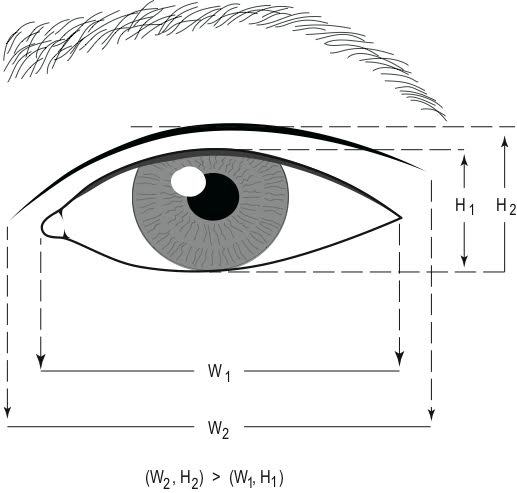
The eyelid crease is a very delicate structure in that the correct position and function of it are interrelated to its form and attractiveness.
Let us elaborate on this: The eyelid crease as seen by us is both a landmark to which our eyelid opening muscle--the elevating levator--attaches to and ends at, its location gives the eye opening its proportion and aesthetics. It just happens that this is also the location where eye surgeons would enter and exit the eyelid; it is in essence a portal or entry-exit point. As a cosmetic blepharoplasty surgeon I obsess over how precisely one should control the details of this in a person without a crease (for Asian Blepharoplasty by Chen or double eyelid surgery) as well as anyone who has a crease already here for age-related tune-ups (cosmetic blepharoplasty).
The benchmark I set for myself is extremely high: I like to aim for creation of a crease that completely simulates a natural crease, in the width, height, shape, permanent consistency and aesthetics, yet without any temporary gimmicks, without any long term impairment in the strength and distance of which the eyelid can open, and without any noticeable reminders of the eyelid having had surgery e.g. buried sutures or noticeable scars other than the crease line thus created. Is that reachable? I believe it is.
The eyelid crease and the levator muscle are interrelated; a natural crease should not cause functional problem, and a properly functioning levator should not affect its aesthetics. It would be a disservice if one finds that after eyelid surgery of any kind, whether cosmetic or for functional reconstructive indications like ptosis repair, trichiasis, lid retraction, ectropion/entropion repair, the function of the levator muscle became impaired.
The key here of course is in the details: How can one perform the correct amount of surgery, measure everything in a correct way, allocate proper attention to each of the layers within the upper eyelid, and layer everything in a three dimensional way such that the function as well as the aesthetic of it working as a whole unit stands up to scrutiny of the human eyes, leaving the subject's eyes feeling good and looking good to others. (And without use of any permanent buried sutures of course!)
In common usage, the eyelid crease is often meant to describe a natural inward creasing of skin seen in the upper eyelid, typically dividing it into a lower segment adjacent to the upper eyelashes, and an upper segment of skin that starts from the crease to the border of the eyebrow.
The crease is present in about 50% of the Asian population, and found to be more prevalent in all non-Asians. The presence of a crease in an Asian is what differentiates a double eyelid (with a crease unequally dividing the lid into two sections, hence “double”) from an Asian with single eyelid or mono-lid.
Double eyelid surgery is a form of surgery to add or supplement an eyelid crease to an individual who seeks it. This is often for an individual who does not have a crease, or find that their crease is insufficient, or unbalanced between the two sides.
The reasons for electing this type of cosmetic enhancement may be plenty, and no individual tend to have the same reasons. The commonly cited and reasonable indications will include a desire to have the eyelid opening (fissure) more apparent, since a single eyelid without crease often has a small fold of skin overhanging the opening and makes it look covered over and smaller than it actually is, making it narrower in vertical as well as perceived horizontal dimensions.
Other reasons may be to enhance the ability to apply make-up without smudging, to save time, to correct asymmetry, to create consistency and constancy, or to fulfill their correct impression that having a crease that simulates a natural crease makes the eye more attractive. The important phrase here is natural. It meant that the single-lidded individual almost always want the crease to mimic the dimensions of an Asian double eyelid.